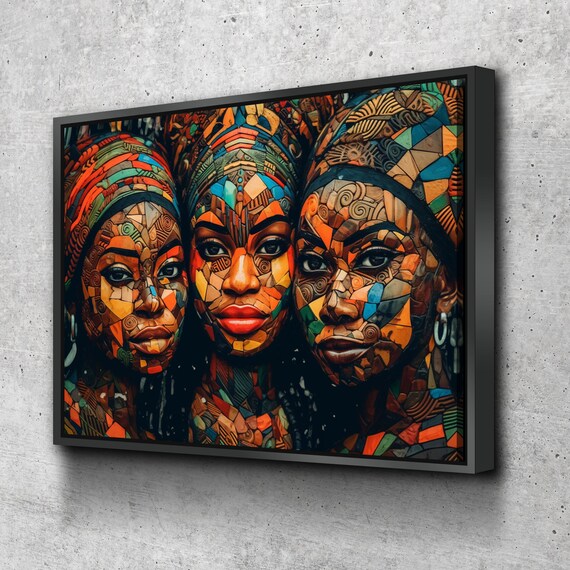African art is a vibrant, diverse, and dynamic force that has captivated the world for centuries. From ancient sculptures and masks to contemporary paintings and installations, the art of Africa reflects the continent’s profound cultural, historical, and social complexity.
Africa is a continent of extraordinary cultural diversity, with over 2,000 distinct ethnic groups and languages spoken. Each of these communities has its own artistic traditions, reflecting unique worldviews, values, and histories. From the intricate beadwork of the Maasai in East Africa to the striking metal sculptures of the Dogon people in Mali, African art is a kaleidoscope of cultures.
African art spans a wide range of forms and mediums, from the traditional to the contemporary. Traditional art includes masks, sculptures, pottery, textiles, and jewelry, each crafted with great skill and artistic intention. Contemporary African art extends this legacy with a fusion of modern influences, including photography, digital media, and installation art. Renowned contemporary artists such as El Anatsui, Yinka Shonibare, and William Kentridge have brought African art to the global stage.
Masks and sculptures are central to African art and play significant roles in rituals, ceremonies, and storytelling. They often serve as a bridge between the physical and spiritual worlds, representing ancestors or deities. The distinctive masks of the Dan people in West Africa, for example, are used in ceremonies to connect with the spirit realm, while the wooden sculptures of the Makonde people in Tanzania depict intricate stories of their culture and history.
African art is deeply connected to identity, both individual and collective. Artists use their work to convey personal narratives, emotions, and cultural heritage. These artworks are a source of pride and empowerment for African communities, often asserting their presence on the global stage while preserving their traditions.
African art has transcended borders and influenced artists and collectors worldwide. The bold colours, abstract forms, and expressive textures found in African art have had a profound impact on the development of modern and contemporary art movements in Europe, the Americas, and beyond. Iconic artists like Pablo Picasso and Henri Matisse drew inspiration from African art, shaping the course of 20th-century Western art.
While African art has made significant strides in gaining global recognition, challenges remain. These include issues of cultural appropriation, the need for greater representation of African artists in international art markets, and the preservation of artistic traditions in a rapidly changing world. However, there are also opportunities for growth and collaboration within the African art community, such as the development of local art markets and educational initiatives that nurture emerging talent.
African art is a testament to the continent’s enduring creativity and cultural richness. It encompasses a multitude of traditions, from ancient sculptures and masks to contemporary expressions, reflecting the diversity and complexity of Africa’s societies. The power of African art lies not only in its aesthetic beauty but also in its ability to tell stories, convey identities, and bridge cultural divides.
As African artists continue to break new ground and global appreciation grows, African art is poised to play an increasingly influential role in the world’s artistic landscape, making its mark on the hearts and minds of people everywhere.

